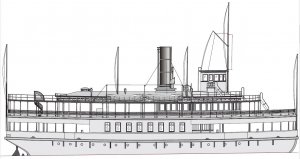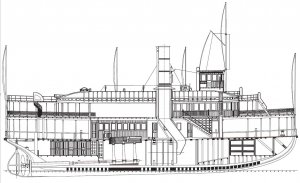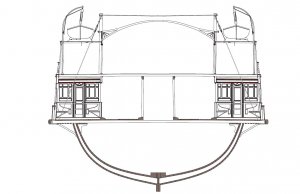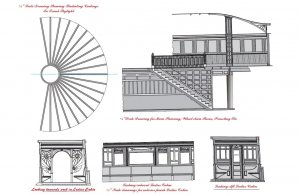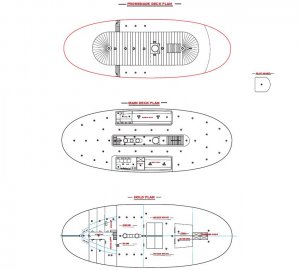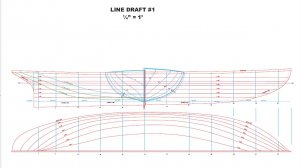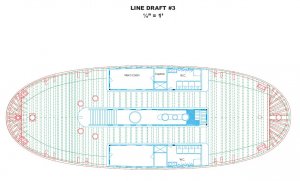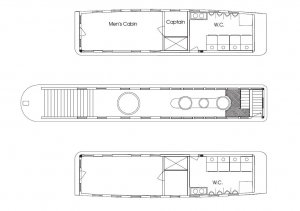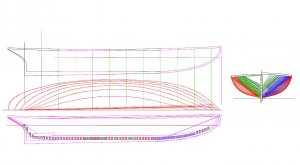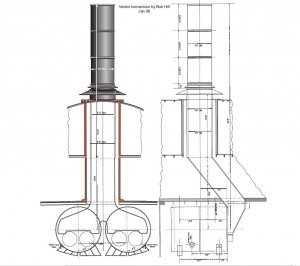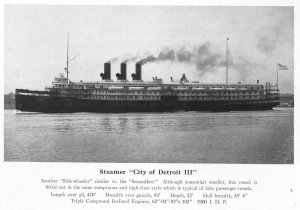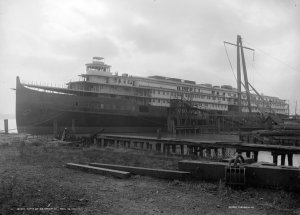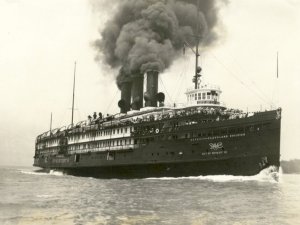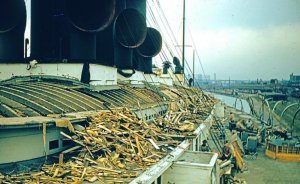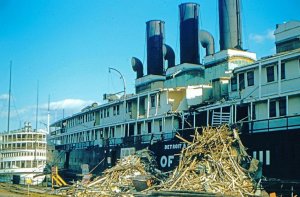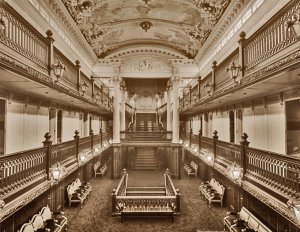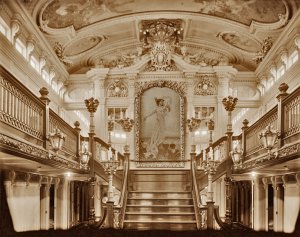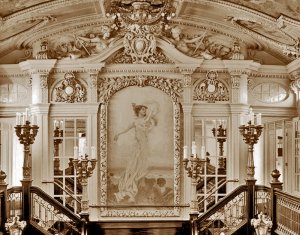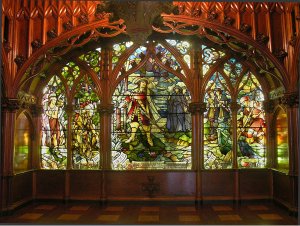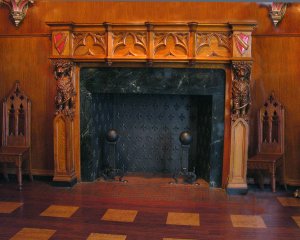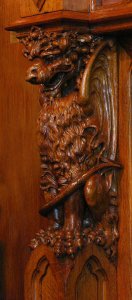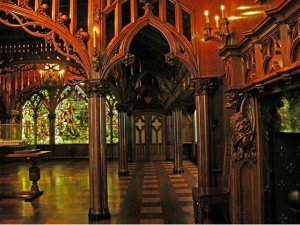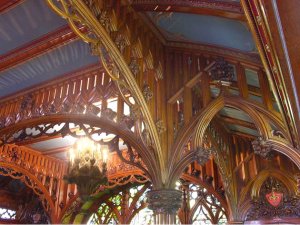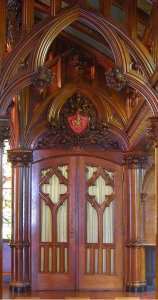- Joined
- Dec 1, 2016
- Messages
- 6,340
- Points
- 728

A story of two cities Detroit and Windsor
and the ferrymen
The history of the ferrymen go way back to the time Detroit was a French fur trading outpost. Then the British took Detroit and finally the Americans. The best way to get to Detroit was by boat, and the boats landed on the north western shore of the Detroit river then fur traders would embark to points west.
After the war of 1812 British subjects took up residents on the Canadian side of the river in what is today Windsor. There was a mass migration across America after the war and Detroit was the gateway to the vast wilderness. Immigrants went to Buffalo then by boat or over land to Detroit. It was a shorter over land route from buffalo to Detroit on the North shore of lake Erie than the southern shore route. The northern route took you to the south eastern shore of the Detroit river thus the need to cross the river. Families of the ferrymen date way back to the early days when the area was largely French Canadians and a scattering of farms and a few businesses. The principal means of crossing the river was by rowing or sailing a bateaux, later to become a double ended sleek row boat. During the winter when the river froze over sleigh or skates were used to cross. However this proved a danger due to areas of broken or thin ice when many people lost their lives. To aid in crossing the river, in the winter the ferrymen would cross the ice and mark the route with large piles of brushwood. The ferrymen's job was indeed seasonal so during the winter the ferrymen would set up ice shacks along the way and sold booze to cold travelers. The tradition of the booze shacks remained into the 1900 as "duty free" sales of goods, because they were in the middle of the river.
In 1796 the British pack up and left Detroit according to the Jays Treaty. The British seat of government of the western district moved to the Canadian side to Sandwich. According to the treaty British subjects were allowed to keep homes and businesses in Detroit so there was an ever increasing volume of river traffic. It was the Americans who first set up a system of ferry owner licenses. The first ferry license was issued to John Askin on Feb 1 1798 Detroit's richest merchant and fur trader. From this day on river traffic came under the authority of the Court of General Quarter Session and Winthrop Sargent was the acting governor of the territory northwest of the Ohio river at the time.
historical note: the largest ferry passenger boat in the world was built on the Great lakes and converted to the first aircraft carrier.
In the old traditions of the ferrymen they loved to tell stories of their ventures. This was in a wild time for Canada and America when you found mountain men and rough fur trappers one of these guys was a French Canadian by the name of Francois Labalaine "this old and honorable servant" for the Hudson bay company in the North west territories, has taken on a more leisurely profession in the ferry service. It was Labalaine who pioneered the ferry services. He did empathize the meaning of "leisurely" and lover to hang out and tell stories to anyone on the docks. His wife had a huge tin mega horn made, and mounted on shore. When a customer arrived she would yell for "Francois" to get home business is waiting and waiting and waiting. It is recorded in the church records of the time you could hear her yell all the way across the river, which by the way is about a half mile. Fran the fur trader ferryman would sing and entertain his customers and his ferry business was more like a river excursion. Well you know it had to come and that's when the government stepped in and on December 2 , 1802 issued the first regulations for ferries. By this time Detroit and Windsor were growing fast and the need to ferry not only passengers but also horses, cattle, wagons and cargo. The government took the "leisure" right out of Frans ferry business. First regulation states a ferryman had to have two save ferry boats and one scow or flat. I am unable to define a "flat" i don't know if it is a raft or not. Regulation 2 from April to November a ferry service must be attended by two good and faithful men. Regulation 3 ferry services must start at sun rise "so much for sleeping in" and run until 10 pm. That's one long day of rowing. And finally regulation 4 a ferry service must be available at all times for mail and other public express. The government even set the prices for one person it was .12, a horse .50, pig and sheep .09, horned cattle .59 a carriage one horse one person one dollar. I noticed there was no fare for cargo i wonder if that's what "public express" is, free shipping for government and businesses that know someone in the government.
and the ferrymen
The history of the ferrymen go way back to the time Detroit was a French fur trading outpost. Then the British took Detroit and finally the Americans. The best way to get to Detroit was by boat, and the boats landed on the north western shore of the Detroit river then fur traders would embark to points west.
After the war of 1812 British subjects took up residents on the Canadian side of the river in what is today Windsor. There was a mass migration across America after the war and Detroit was the gateway to the vast wilderness. Immigrants went to Buffalo then by boat or over land to Detroit. It was a shorter over land route from buffalo to Detroit on the North shore of lake Erie than the southern shore route. The northern route took you to the south eastern shore of the Detroit river thus the need to cross the river. Families of the ferrymen date way back to the early days when the area was largely French Canadians and a scattering of farms and a few businesses. The principal means of crossing the river was by rowing or sailing a bateaux, later to become a double ended sleek row boat. During the winter when the river froze over sleigh or skates were used to cross. However this proved a danger due to areas of broken or thin ice when many people lost their lives. To aid in crossing the river, in the winter the ferrymen would cross the ice and mark the route with large piles of brushwood. The ferrymen's job was indeed seasonal so during the winter the ferrymen would set up ice shacks along the way and sold booze to cold travelers. The tradition of the booze shacks remained into the 1900 as "duty free" sales of goods, because they were in the middle of the river.
In 1796 the British pack up and left Detroit according to the Jays Treaty. The British seat of government of the western district moved to the Canadian side to Sandwich. According to the treaty British subjects were allowed to keep homes and businesses in Detroit so there was an ever increasing volume of river traffic. It was the Americans who first set up a system of ferry owner licenses. The first ferry license was issued to John Askin on Feb 1 1798 Detroit's richest merchant and fur trader. From this day on river traffic came under the authority of the Court of General Quarter Session and Winthrop Sargent was the acting governor of the territory northwest of the Ohio river at the time.
historical note: the largest ferry passenger boat in the world was built on the Great lakes and converted to the first aircraft carrier.
In the old traditions of the ferrymen they loved to tell stories of their ventures. This was in a wild time for Canada and America when you found mountain men and rough fur trappers one of these guys was a French Canadian by the name of Francois Labalaine "this old and honorable servant" for the Hudson bay company in the North west territories, has taken on a more leisurely profession in the ferry service. It was Labalaine who pioneered the ferry services. He did empathize the meaning of "leisurely" and lover to hang out and tell stories to anyone on the docks. His wife had a huge tin mega horn made, and mounted on shore. When a customer arrived she would yell for "Francois" to get home business is waiting and waiting and waiting. It is recorded in the church records of the time you could hear her yell all the way across the river, which by the way is about a half mile. Fran the fur trader ferryman would sing and entertain his customers and his ferry business was more like a river excursion. Well you know it had to come and that's when the government stepped in and on December 2 , 1802 issued the first regulations for ferries. By this time Detroit and Windsor were growing fast and the need to ferry not only passengers but also horses, cattle, wagons and cargo. The government took the "leisure" right out of Frans ferry business. First regulation states a ferryman had to have two save ferry boats and one scow or flat. I am unable to define a "flat" i don't know if it is a raft or not. Regulation 2 from April to November a ferry service must be attended by two good and faithful men. Regulation 3 ferry services must start at sun rise "so much for sleeping in" and run until 10 pm. That's one long day of rowing. And finally regulation 4 a ferry service must be available at all times for mail and other public express. The government even set the prices for one person it was .12, a horse .50, pig and sheep .09, horned cattle .59 a carriage one horse one person one dollar. I noticed there was no fare for cargo i wonder if that's what "public express" is, free shipping for government and businesses that know someone in the government.
Last edited:


